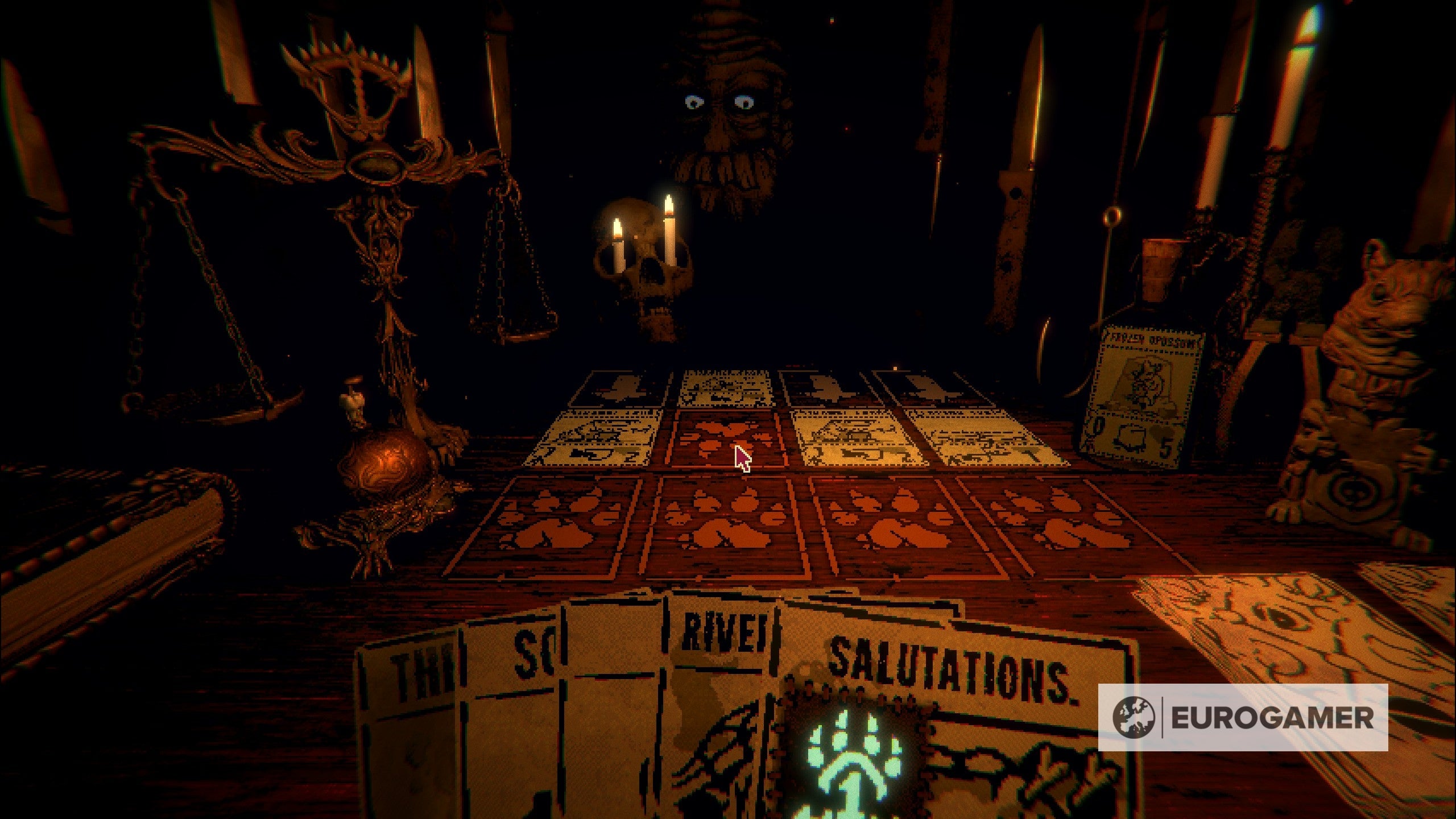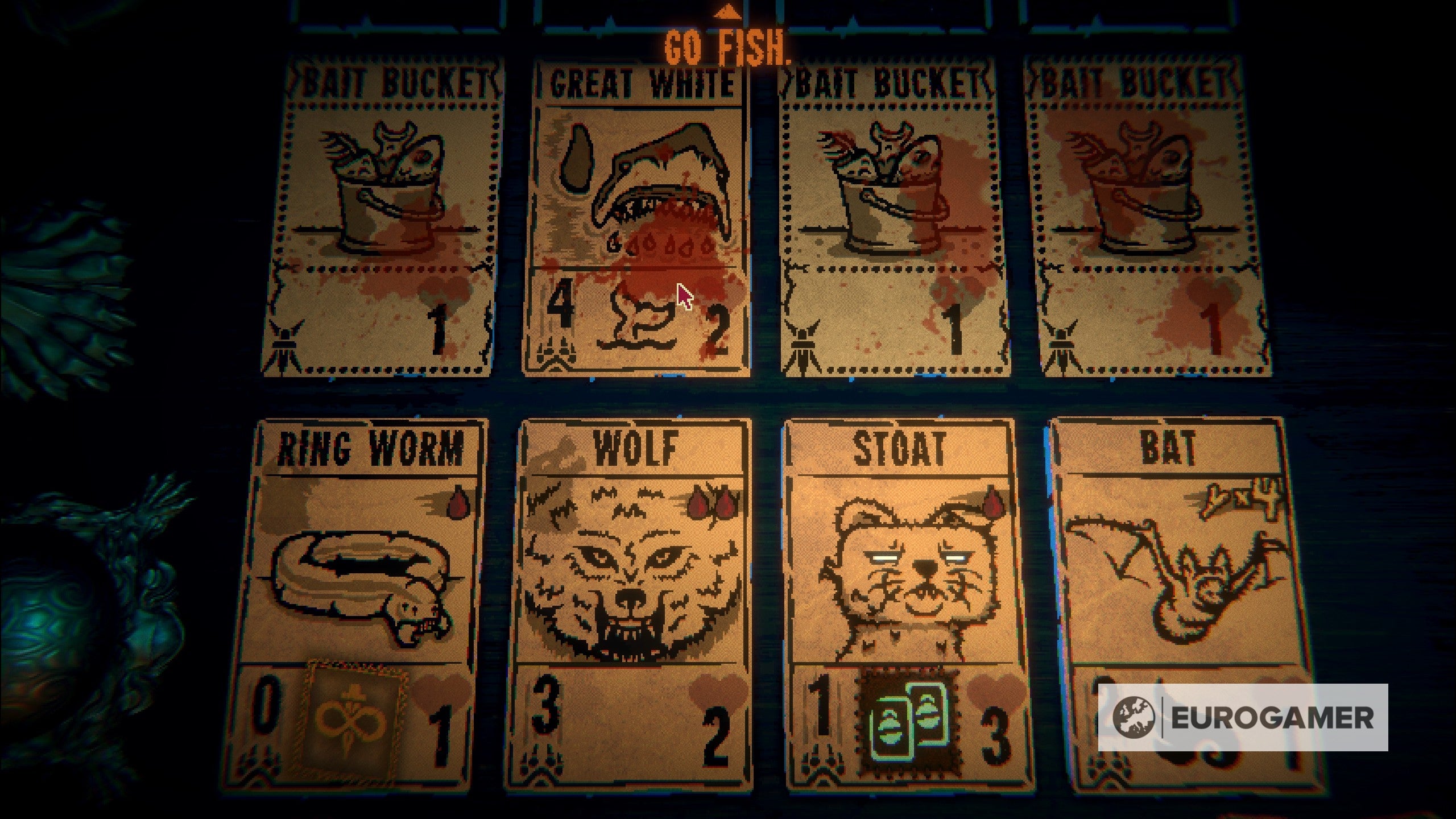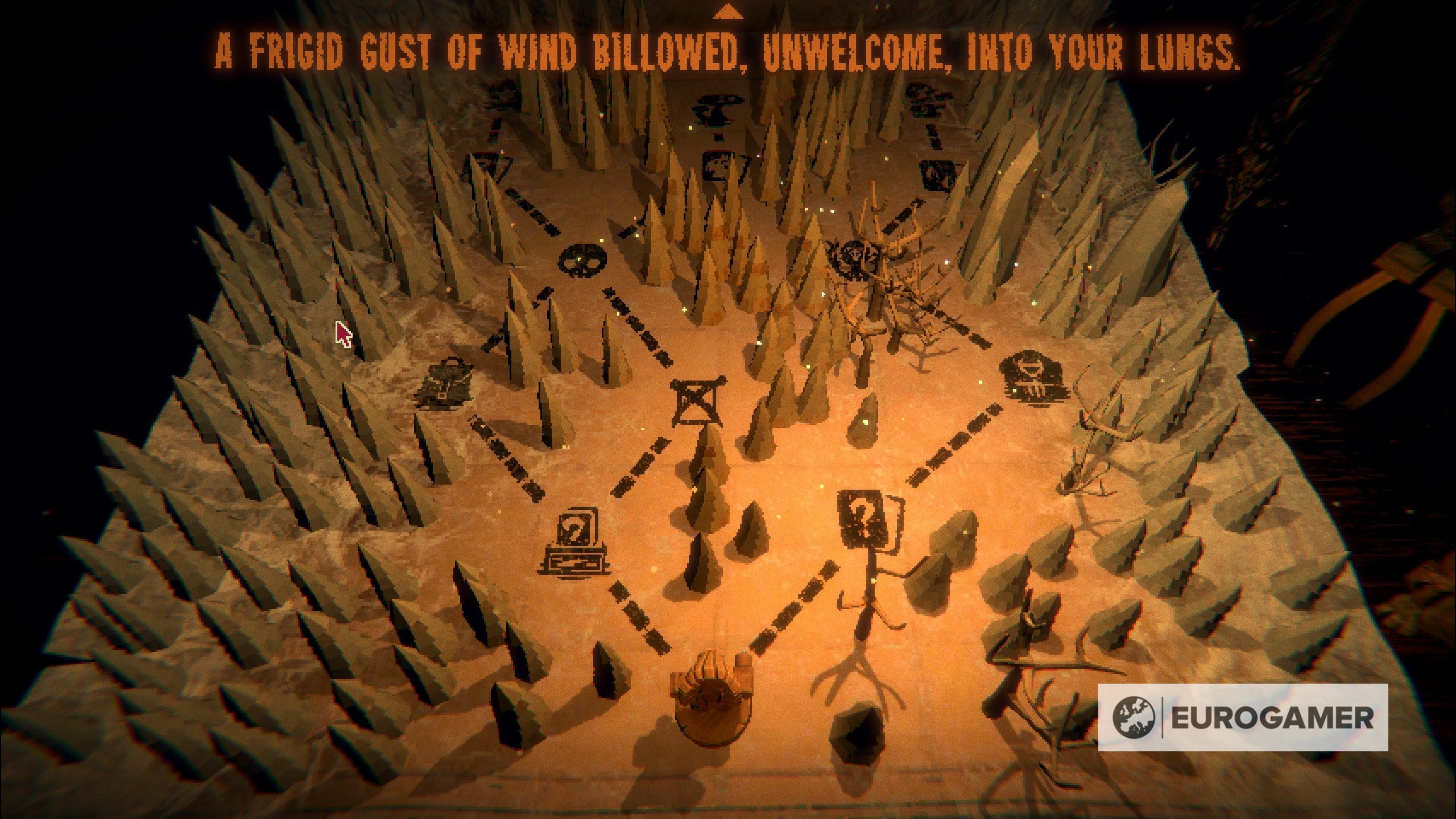You are the toy - that is clearly the theme. But you are trying to break out, and escape. But from what? What is that being sat across the table from you, shrouded in the darkness, with only eyes visible, watching, boring into you. They seem to have complete control over you and the surroundings, this wood cabin in the middle of… you have no idea. It feels like it should be an American Wild West frontier, but it could be anywhere, if it’s really real at all. And yet, you’re free to walk around, to puzzle over the ornaments you find there. The only problem comes when you try to leave. Inscryption is creepy. It’s ominous, it’s oppressive. It’s what you’ve probably already noticed by glancing at it. This is a card game that looks like a cursed reincarnation of something you’d play on a floppy disc in the ’90s: a low fidelity-but-trying kind of adventure, but hijacked by some kind of evil and then twisted and gnarled by malevolence. And this atmosphere seeps into you while you play. Toadish warbles of bass and threatening clanks of machinery prevent any comfort. Inscryption is deliberately unpleasant. It is beautiful. This horrific theme permeates down into the card game you play. Briefly: it plays a bit like Magic: The Gathering in that you place creatures which attack the other player and chip away at their health, unless they’re blocked. Do enough damage and you win. In between battles, meanwhile, you move a piece along a map-board towards a boss, while stopping to build your deck, modifying your cards, and buying items for combat. In this, it’s like Slay the Spire. But in Inscryption, the resource for playing creatures is blood, and you earn the blood by sacrificing. Thus, your adorable little squirrel already on the board becomes your default way of earning the blood droplet you need to summon something else. And later, you will unlock bone tokens, which you accrue when your creatures die. Pleasant, isn’t it? The thing is, some of it is almost pleasant. Many of the creatures in your hand are the kind of things you’d see in a Disney wood. They are the birds and beasts of the forest, the deer, the porcupine, the cats, the ravens, magpies and kingfishers, which makes for a startling juxtaposition when drawn in these circumstances. It’s also fascinating that a game should focus on them, because they’re not exciting, they’re not typically heroic or epic. They’re not what I imagine someone, maybe a child, would draw when asked to imagine the most ferocious beast they can. Instead, the game goes smaller, and it goes stranger. This is a game with a ringworm card. A ringworm! There’s a mantis, an amoeba, a stink bug, corpse maggots, and then when you get towards the very special cards, there are even stranger ones still: rats with two heads, weird experiments of animals, cards that glitch. Inscryption delights in it, and it’s delightfully refreshing because of it. It’s so nice not to see Epic Dragon of Death yet again. And the game knows this, I think. Then, there’s what you can do to the cards. In other games, there’s one, maybe two ways to upgrade a card, but here there are many and all beautifully in keeping with the tone. Here’s a campfire surrounded by figurines: do you want to lay a card in it to potentially increase its power or health? Yes. Now comes a better question: Do you want to risk doing it again? Or here’s a sacrificial altar: Do you want one of your cards to sacrifice another to absorb their sigil, a kind of special power that can be incredibly powerful? Or here’s a surgery table for sawing and sticking duplicate cards together, leaving them more powerful but with a horrible ragged scar down their Frankencard middle. There’s imagination in the way you earn cards, too. There’re basic moments of choice, and blind-choosing, but there’s also - in keeping with the American Frontier theme - the ability to buy and trade pelts for cards. The drawback being that pelts are cards too, and clog up your hand, but should you make it to a trader, the rewards are worth it. There are even quizzes to test how well you know your deck, and prizes if you win. On top of this, there are items like pliers you can pull teeth with, scissors you can cut up cards with, and a knife you can… I won’t spoil it. The point being: Inscryption plays cards in its own way, and it really works. There’s surprising depth to it. I remember the four-space playing area looking simple when I began, like it was a thinner, copycat version of something else. But now I see it through different eyes. I see deliberate limitations to force difficult decisions. Clogging your own channels is a very real problem. Play the wrong card and you could suffer for it - the game does not hesitate to snuff out your lights. This appreciation develops as the game widens for you, which is something I always look for. I don’t want to see everything right away. I want a game like this to unfold as I play it again and again, and Inscryption does that. Maps literally widen with new paths and options, and new deck-building elements are pulled in to explore. And then, when you feel like you’re on top of the game, a layer of the story peels back to reveal something completely new, something entirely unexpected. I don’t want to say too much and spoil the surprise, and I should say it’s still based around cards, but it’s as though another phase of the adventure begins, and it leaves you reeling about where Inscryption will go next. I said I loved how Inscryption played with expectations, and I do, but there’s something else I love about it too. It’s the game’s confidence. You can feel an assuredness of touch and a strength flowing through the ideas in Inscryption, and they combine to deliver such a wallop of an impression it’s hard to stop thinking about it. It’s no wonder developer Daniel Mullins has already cultivated an eager following for the equally strange (and potentially related?) games Pony Island and The Hex. Inscryption is a wonderful nightmare, and it plays a vividly memorable game of cards.




